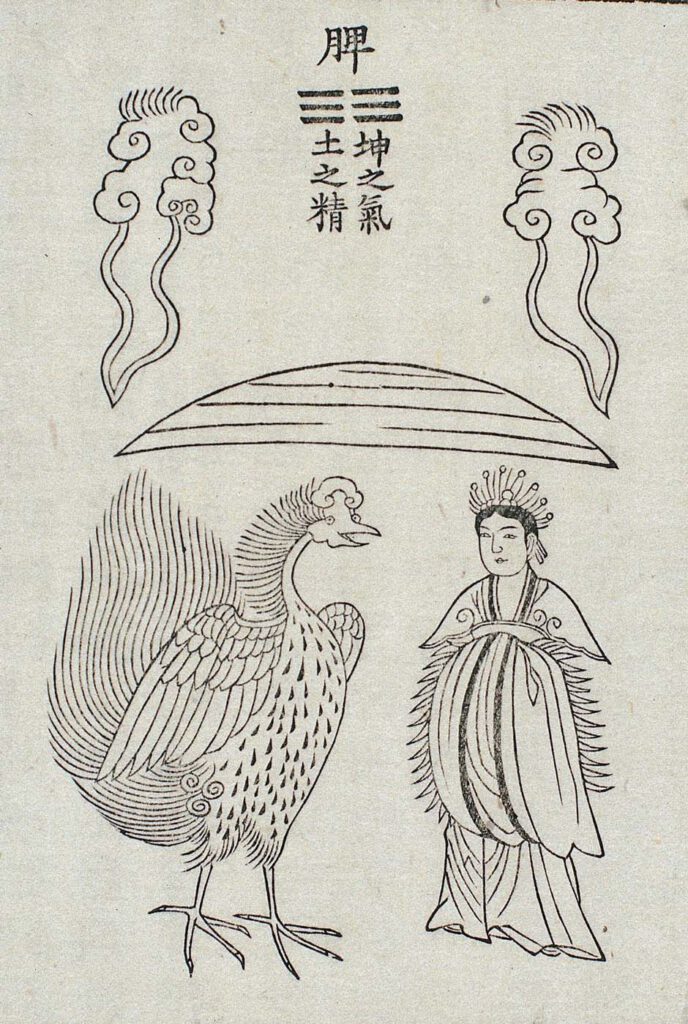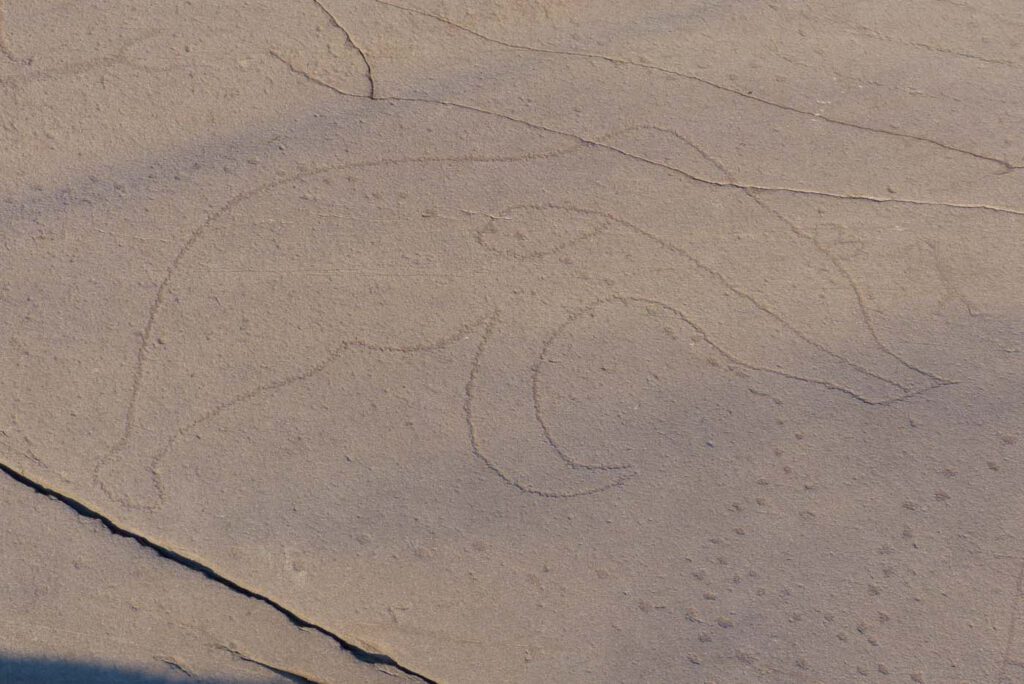The Body

The Body Diagram showing the location of the organs responsible for digestion, including spleen, stomach, small intestine, large intestine, and urinary bladder (from Hǒ Chun, Treasured Mirror of Eastern Medicine). – In the representative Korean medical text, Tongui Pogam 東醫寶鑑Treasured Mirror of Eastern Medicine (1613), Hǒ Chun explained the body, in Daoist and Buddhist conceptual […]
The Spleen

The Spleen organ responsible for digestion (from the Compilation of Medical Prescriptions). – This image appears in the Uibang Yuchwi 醫方類聚 (Compilation of Medical Prescriptions 1445). It draws inspiration from the Chinese physician Hu Yin’s (fl. 848) Huangting Neijing Wuzang Liufu Buxie Tu 黃庭內景五臟六腑補瀉圖(Diagram of the inner landscape of supplementing and reducing the five zang […]
Drawing of rock carving of an elk with numerous anatomical parts depicted

Drawing of rock carving of an elk with numerous anatomical parts depicted. Åskollen in southern Norway. From: Rock Art and the Wild Mind. Visual Imagery in Mesolithic Northern Europe. Ingrid Fuglestvedt, Copyright © 2018, London, Routledge. Figure 5.2, page 192. Reproduced by permission of Taylor & Francis Group. – A few rock carvings in southern […]
Rock carving of reindeer with intestines

Rock carving of reindeer with intestines. Alta, northern Norway. Photo: Karin Tansem, VAM, Copyright © World Heritage Rock Art Centre – Alta Museum (CC BY-NC-SA 4.0) – The large antlers indicate that this is a reindeer bull. The vertical lines in the front part of the torso may represent the ribs and the complex set of lines […]
Rock carving of elk with lifeline and guts

Rock carving of elk with lifeline and guts. Alta, northern Norway. Photo: Karin Tansem, VAM, Copyright © World Heritage Rock Art Centre – Alta Museum. (CC BY-NC-SA 4.0) – Only a few of the rock art images in northern Norway display a patterning that is likely to represent guts in an unambiguous way. This male elk is […]
Slate knife with two porpoises engraved

Slate knife with two porpoises engraved. Found at Teksdal, central Norway. Photo: Per E. Fredriksen, NTNU University Museum CC BY-NC-SA 4.0 – This single-edged knife of reddish-brown slate, or sandstone bears three engravings of fish or porpoises, two on one side (shown here) and one on the back. All three display the same internal patterning, a […]
Rock carving of Brown bear with lifeline

Rock carving of Brown bear with lifeline. Alta, northern Norway. Photo: Charlotte Damm – This bear, a large, more than one metre long figure, is portrayed through the outline of the animal’s profile only. The only other visible feature is a line running from the snout to an oblong circle located in the front part […]
